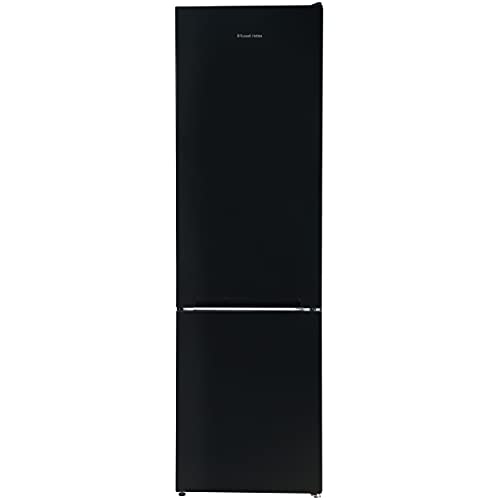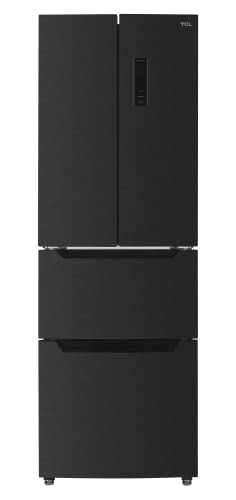
Fridge Freezer Sale Uk
إضافة مراجعة اتبعلمحة عامة
-
Sectors خيرية وتطوعية
-
الوظائف المنشورة 0
-
تمت مشاهدتها 7
Company Description
The Best Fridges And Freezers Tricks To Transform Your Life
Understanding Fridges and Freezers: The Essential Kitchen Appliances
Fridges and freezers are two of the most important home appliances in contemporary kitchen areas. These appliances serve a crucial role in food preservation and waste reduction by ensuring that disposable items stay fresh and safe for intake. This post delves into the various types of Best fridges and freezers, their performances, and crucial considerations for selection and upkeep.
Kinds of Refrigerators
The marketplace offers a variety of refrigerator types, each designed to meet various customer needs. Below is a list of the most common types of fridges:
-
Top-Freezer Refrigerators
- Most common type.
- Freezer compartment lies above the refrigerator section.
- Usually more economical and energy-efficient.
-
Bottom-Freezer Refrigerators
- Freezer lies at the bottom.
- Allows simpler access to fresh products at eye level.
- Typically features pull-out drawers for much better organization.
-
Side-by-Side Refrigerators
- Refrigerator and freezer areas are adjacent.
- Suitable for narrow cooking areas and enables easy access to both compartments.
- Frequently features water and ice dispensers.
-
French Door Refrigerators
- Integrates a bottom freezer with double doors at the top.
- Offers sufficient storage and stylish designs.
- Typically includes features like temperature-controlled drawers.
-
Compact Refrigerators
- Smaller sized size ideal for restricted areas.
- Typically used in dormitory rooms, little homes, or as secondary fridges.
Table 1: Comparison of Refrigerator Types
| Type | Benefits | Downsides | Typical Size |
|---|---|---|---|
| Top-Freezer | Budget friendly, energy-efficient | Less convenient access to the freezer | 14-30 cu. ft. |
| Bottom-Freezer | Easier access to fresh food | Freezer can be more difficult to organize | 19-30 cu. ft. |
| Side-by-Side | Easy access, water/ice dispenser | Narrow vs. storage space | 22-30 cu. ft. |
| French Door | Elegant, roomy, organized | More costly | 20-30+ cu. ft. |
| Compact | Space-saving, portable | Restricted storage | 1.7-5.5 cu. ft. |
Types of Freezers
Freezers are an equally crucial appliance for food preservation. They can be found in numerous styles created to fit different family needs. Think about the list below types:
-
Upright Freezers
- Run like a basic refrigerator with vertical storage.
- Easier to organize with shelves and compartments.
-
Chest Freezers
- Big, horizontal design generally using more storage space.
- Maintains temperatures better during power outages.
- More energy-efficient than upright models.
-
Portable Freezers
- Compact systems ideal for outside activities or little areas.
- Often utilized for camping trips or as momentary storage.
Table 2: Comparison of Freezer Types
| Type | Benefits | Disadvantages | Common Size |
|---|---|---|---|
| Upright Freezer | Simpler to arrange | Less energy-efficient, more floor space | 5-20 cu. ft. |
| Chest Freezer | Holds more items, energy-efficient | Harder to organize | 5-25 cu. ft. |
| Portable Freezer | Compact and flexible | Restricted storage capability | 1-10 cu. ft. |
Key Features to Consider
When picking a fridge or freezer, consumers must keep in mind a number of functions that can improve functionality:
- Energy Efficiency: Look for models with the ENERGY STAR certification to minimize electrical power costs.
- Storage Capacity: Evaluate storage requirements based on family size and eating habits.
- Temperature level Control: Some home appliances use digital controls for exact temperature settings.
- Adjustable Shelving: Customizable shelving permits ideal company.
- Water and Ice Dispenser: Offers benefit but can take up valuable space inside.
- Sound Level: Sound ratings can affect convenience, especially in open-concept homes.
Pros and Cons of Having a Fridge and Freezer
While fridges and freezers are vital technologies, they likewise have specific benefits and downsides:
| Pros | Cons |
|---|---|
| Preserve food life expectancy and lower waste | Require routine upkeep |
| Permit bulk buying and meal prepping | Can be costly to acquire and run |
| Offer benefit and quick access to food | Inhabit significant cooking area space |
Maintenance Tips
To make sure durability and optimal performance of fridges and freezers, think about the following upkeep tips:
- Regular Cleaning: Clean the interior and outside regularly to avoid accumulation of dirt and germs.
- Check Seals: Inspect door seals routinely for leaks to maintain performance.
- Temperature Settings: Keep the fridge at 34-38 ° F and the freezer at 0 ° F for ideal food conservation.
- Defrost as Needed: Chest freezers ought to be defrosted frequently to preserve efficiency.
- Clear Air Vents: Ensure that airflow isn’t blocked to improve energy performance.
FAQs About Fridges and Freezers
Q1: How long can food be saved in a freezer?A: Most foods can be kept in a freezer for numerous months. Meats and poultry typically last 4-12 months, while veggies can last approximately 8-12 months.

Q2: How typically must I clean my fridge and freezer?A: It is a good idea to clean your fridge and freezer every 3 to 6 months, or as required when spills happen. Q3: Can I put hot food straight in the fridge?A: It is advised to cool hot food to room temperature level before putting it in the fridge to prevent
raising the temperature level inside the device. Q4: Why is my fridge running constantly?A: This could be due to a malfunctioning thermostat, clogged up coils, or door seals that aren’t working effectively. Fridges and freezers are vital
possessions to contemporary homes, supplying essential services for food storage and conservation.
Understanding the numerous types, features, and upkeep requirements can assist consumers pick the ideal home appliances for their needs and maximize their functionality. Embracing energy-efficient models not just supports sustainable practices however likewise adds to substantial cost savings on energy costs, making notified options more important than ever.
